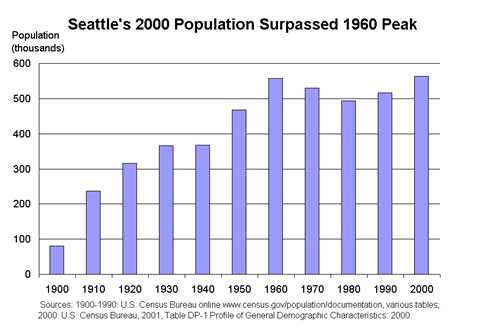

“The central Puget Sound region is home to Fortune 500 corporations such as Microsoft, Boeing and Starbucks, while serving as a primary gateway for the movement of goods to and from East Asian markets through its world class ports and terminal facilities. The region has only two transportation facilities crossing Lake Washington: I–90 and SR 520 Floating Bridges. The Puget Sound area is faced with a growing population and increased congestion on these key regional links. The Central Puget Sound region has a steadily growing population with an estimated 3.5 million people in 2005 and is projected to grow to over 4.6 million by 2030 with notable growth assumed on the east side of Lake Washington.”[1]
The Impact the floating bridge made on Seattle is not quite as evident as its impact on the the East side of Lake Washington (known locally as simply “The Eastside”) but it made an impact nonetheless. The bridge took out 21 miles of slow roadway around the lake allowing goods and people to move in and out of Seattle much more easily and efficently. It aided in the explosive population and economic growth that Seattle experienced throughout the 1940s-1960s which essentially put Seattle on the map as a major city.
 As the graph and accompanying data shows the decade before the bridge was opened (1930–1939) the population of seattle only rose 1% from 365,583 to 368,302. However the decade following the construction of the bridge (1940–1949) experienced explosive population growth of 27% bringing the total population up 99,289 people to 467,591.[2]
As the graph and accompanying data shows the decade before the bridge was opened (1930–1939) the population of seattle only rose 1% from 365,583 to 368,302. However the decade following the construction of the bridge (1940–1949) experienced explosive population growth of 27% bringing the total population up 99,289 people to 467,591.[2]